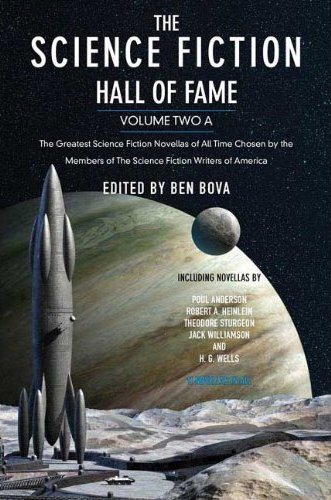
The more I read of science fiction from the 1930’s to 60’s, the more I realize that this was where our culture grew up in a sense it hadn’t before. These people were dreaming the future we live in. I don’t mean because they (good grief) “predicted” anything, but because they were pioneers of new ideas, new perspectives, new attitudes. To fully explore all that you needed a literature without any limits, where every dial could be turned.
The format they did it best with was the short format. Maybe it was an accident of publishing history, I don’t know. But most of the best science fiction stories are either short stories or short novels.
For exploring the novels, have a look at the Gollancz Masterworks series. For the rest there’s anthologies. This is one of them. Every story here is exceptional or historic in some way: Call Me Joe (1957) by Poul Anderson, which contains the core ideas of Avatar. Who Goes There? (1938) by John W. Campbell, filmed as The Thing. Universe (1941) by Heinlein, the original degenerate generation ship story, (one echo of which is WALL-E). The Marching Morons (1951) by C. M. Kornbluth, the basis for Idiocracy.
The deep link between science fiction and libertarianism is demonstrated in … And Then There Were None (1951) by Eric Russell, which portrays moneyless anarcho-libertarians inspired by Gandhi, and With Folded Hands (1954) by Jack Williamson, the nanny state nightmare version of Asimov’s robotic laws.
As anthologies go, this is about as good as it gets.
I’ll have to read this. I was reading Gibson’s Neuromancer, and was impressed that such a “modern” book was written in the 80′s. And then you have authors like the ones above mixed in with Verne, Wells, and Clarke.
P.S. Are the volumes in chronological order?
I don’t think there are many ideas in science fiction movies today that hadn’t already been explored in writing by the 1950′s. It’s like there is a fifty year lag.
The first volume contains short stories, this second volume (which is in two parts, I’ll read the second part soon) contains novellas. The stories are all from the 1930′s to the early 50′s, + actually one by Wells.